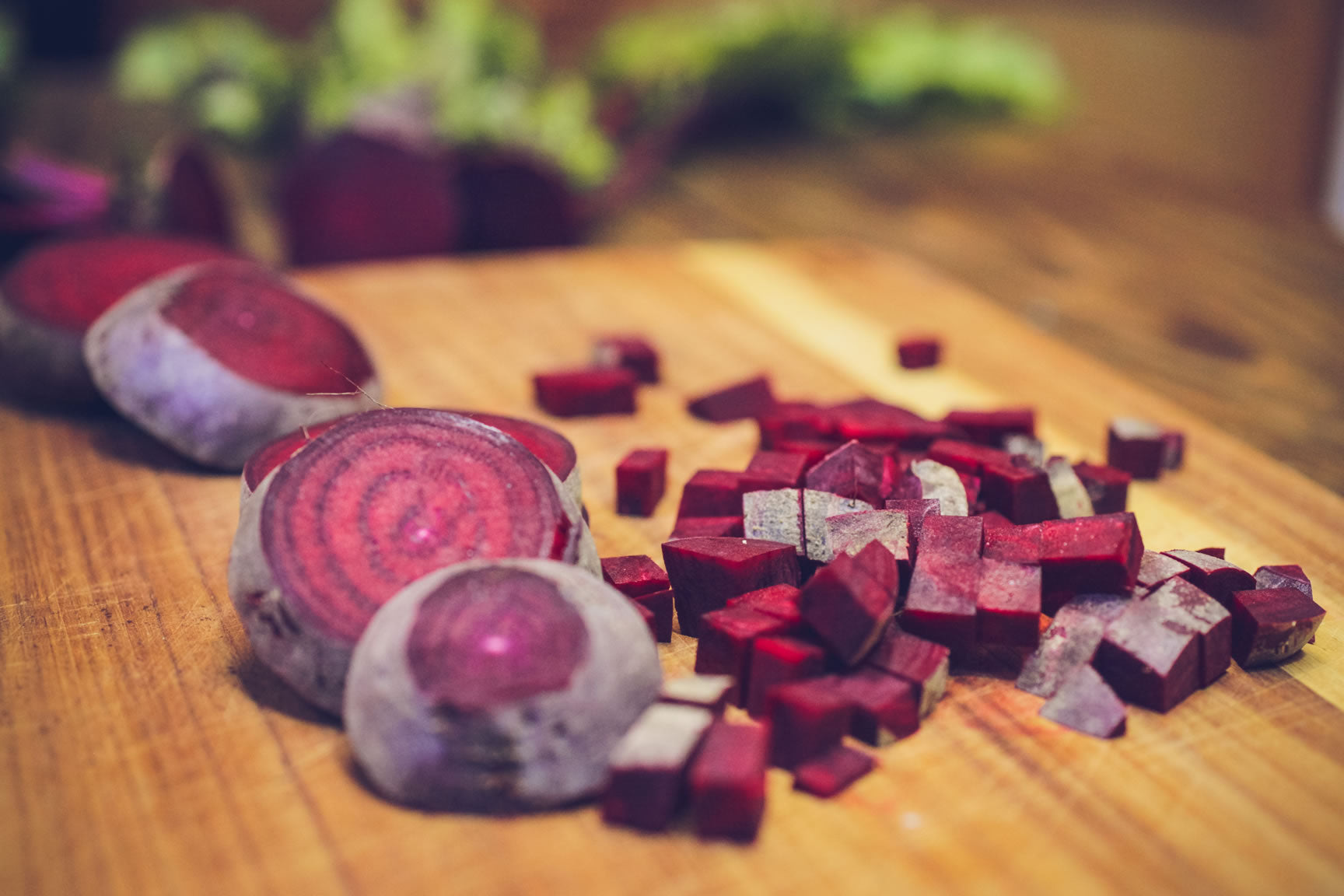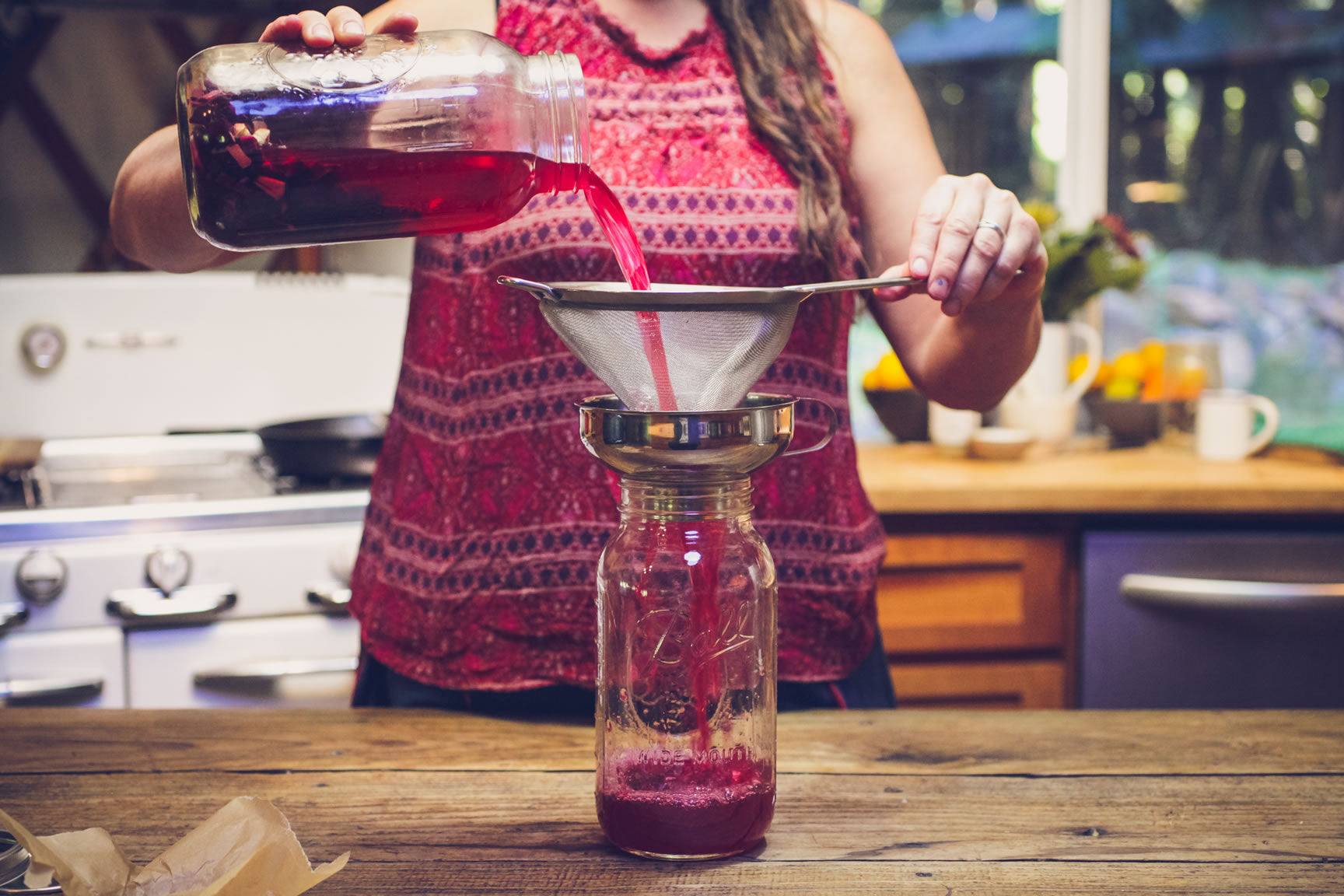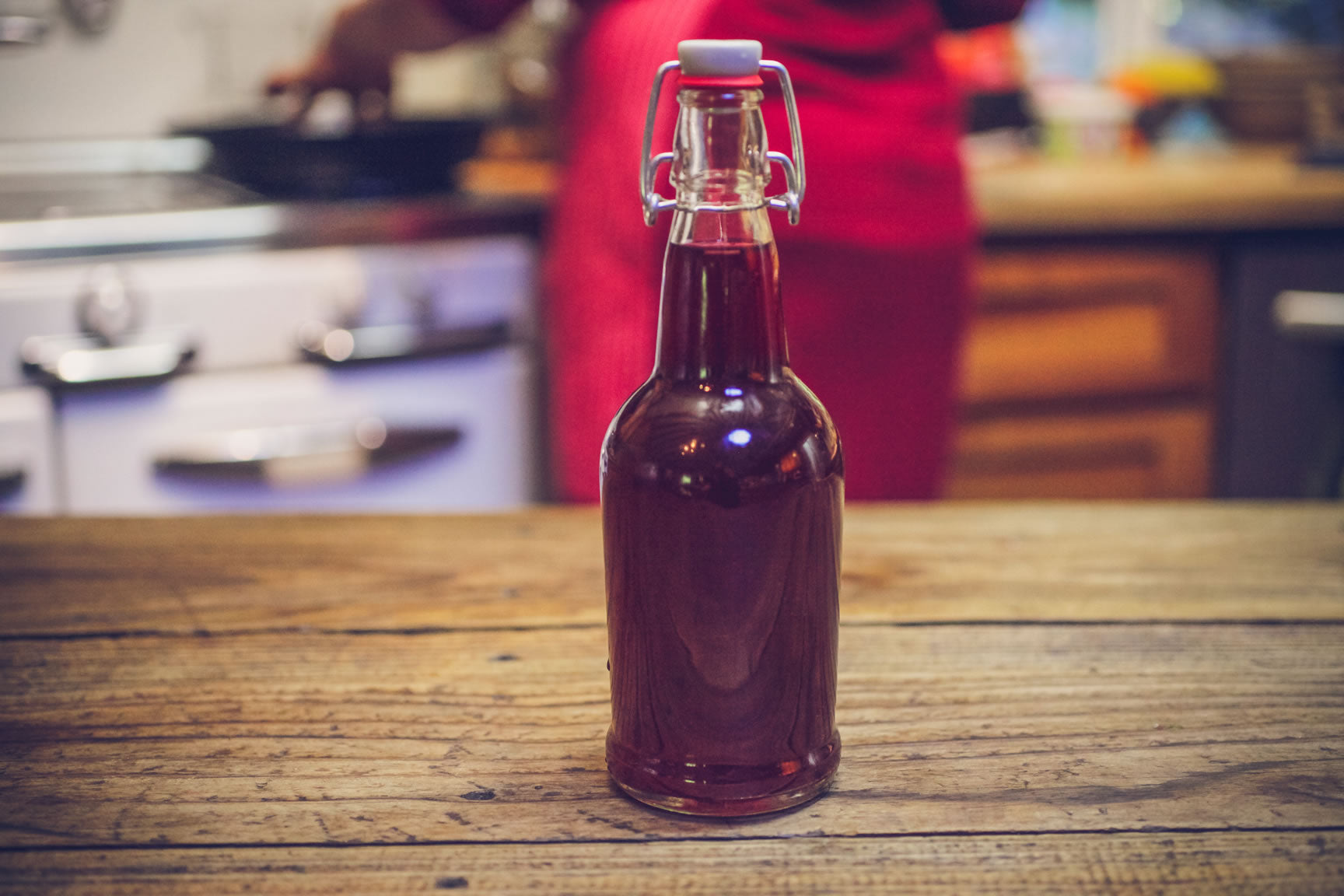- Continue Shopping
- Your Cart is Empty
Ginger Mint Beet Kvass

What You'll Need
Equipment
- measuring cups and spoons
- good kitchen knife and clean cutting surface
- half-gallon mason jar
- parchment paper
- stainless steel mesh strainer
- stainless steel canning funnel
- stainless steel bottling funnel
- air-tight bottles for storage
Ingredients
- 3 medium-sized beets (about 2 cups, chopped)
- 2” fresh ginger root
- 2-3 teaspoons sea salt, dissolved in 1 quart water
- 1 tablespoon lemon juice optional)
- 1 tablespoon whey (optional)
- sprig of mint (optional)
Deep ruby in color, pleasingly tart and salty in taste, beet kvass is a healthful, probiotic tonic that delights both eye and palate. Beets are, of course, chock full of nutrition on their own; they are rich in folate, manganese, copper, and potassium, as well as antioxidants and anti-inflammatory compounds. When fermented, they become a boon to digestion, as well, both for their probiotic benefits as well as their nutritional profile. Beets cleanse the liver and alkalinize the blood, stimulate blood flow to the brain while lowering blood pressure. And that color!! It speaks to the soul, to the gut, to the heart. Beets are magic.
Beet kvass is easy to make; at its simplest, it is nothing more than beets, salt, and water. We like to brighten the flavor with a few slices of ginger, and a squeeze of lemon or a sprig of mint are nice additions too. Once the mixture has fermented for anywhere from 3-14 days, you can remove the beets and eat them in salads, but the liquid that is left behind is the real treasure. A shot or a small glass daily is all that is needed to get the benefits, but it can be used in other ways, too. As a base for borscht, or an ingredient in other soups, dips, and salad dressings, it adds a salty, sour, savory flavor that does not dominate the other ingredients.
The levels of salt can be adjusted to taste, but if you plan to ferment this mixture longer than a day or two, it’s best to use at least 2 teaspoons of salt, if not a tablespoon. The salt protects the ferment from unwanted bacterial and fungal contamination, and helps the beets release their properties into the brine. Whey is often added to initiate faster fermentation, but the kvass will ferment without it, due to the natural bacterial populations on the beet skin, so it is listed as an optional ingredient. The lemon juice, also optional, is used to slightly acidify the ferment before the lactic acid bacteria have a chance to; in addition, it adds a pleasing flavor. As with sauerkraut, and other vegetable ferments, the kvass will become more sour the longer it is allowed to ferment. 
Directions
Wash the beets well, but do not peel them; the skins hold a lot of nutrition. Chop the beets into small 1/2” cubes. While it may be tempting to grate the beets, it’s better to cube them; grated beets will release their sugars too fast and make an alcoholic rather than a lactic acid ferment. Many of the nutrients are concentrated in the nubbly area where the stems meet the root, so throw those into the mix, too, even though they’re funny lookin’.
Slice the ginger thinly, leaving the skin on.
Place the beets and ginger in a large glass jar. Here we are using the Ball half-gallon jar.
Dissolve 2-3 teaspoons sea salt in a quart of water, and pour over the beets. 
Add the lemon juice and/or whey, if using. If desired, add a sprig of fresh mint to infuse along with the beets.
Seal the jar. We like to line the metal caps with a sheet of parchment paper, to keep the acidity of the ferment from corroding the metal.  Check the ferment daily, and release pressure from the jar if necessary. Kvass does not create as much pressure as kraut or kombucha, so we do not usually use a jar top fermentation kit, but that is also an option if you prefer not to have to check it as often.
Check the ferment daily, and release pressure from the jar if necessary. Kvass does not create as much pressure as kraut or kombucha, so we do not usually use a jar top fermentation kit, but that is also an option if you prefer not to have to check it as often.
Allow the kvass to ferment at room temperature, out of direct sunlight, for 3-14 days. We humbly suggest that you let it go for at least a week. Young kvass tastes more earthy and beety, but an older kvass gets much more interesting, tart, and complex.
When the ferment has made a flavor to your liking, strain out the beets. They may be used to make a second batch of kvass, if desired, or eaten in salads or as a pickled condiment.
If desired, the kvass can be bottled and let to stand at room temperature for a few days, which may create a light carbonation. It is customary, though, just to store the kvass in the fridge and drink it without carbonation.
Bottle in an air-tight bottle and store in the refrigerator.

To your health.
 Over to You
Over to You
It’s part of our mission here at Mountain Feed to help you make delicious, sustainable, homemade food more often. Stop by and say hello on Facebook, Twitter, Instagram or Pinterest. Or, as always, you can do it the old fashioned way and come by the store to speak with one of our in-house experts.

 Over to You
Over to You